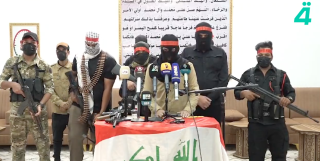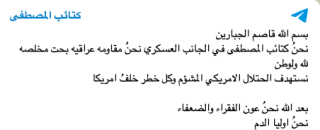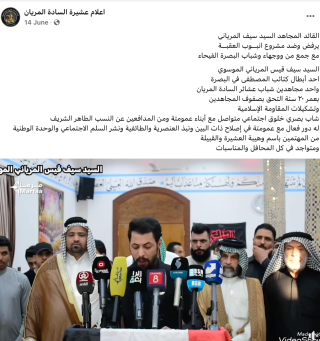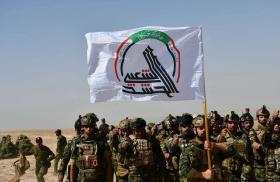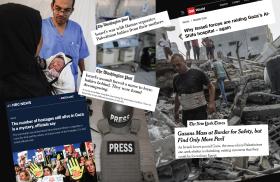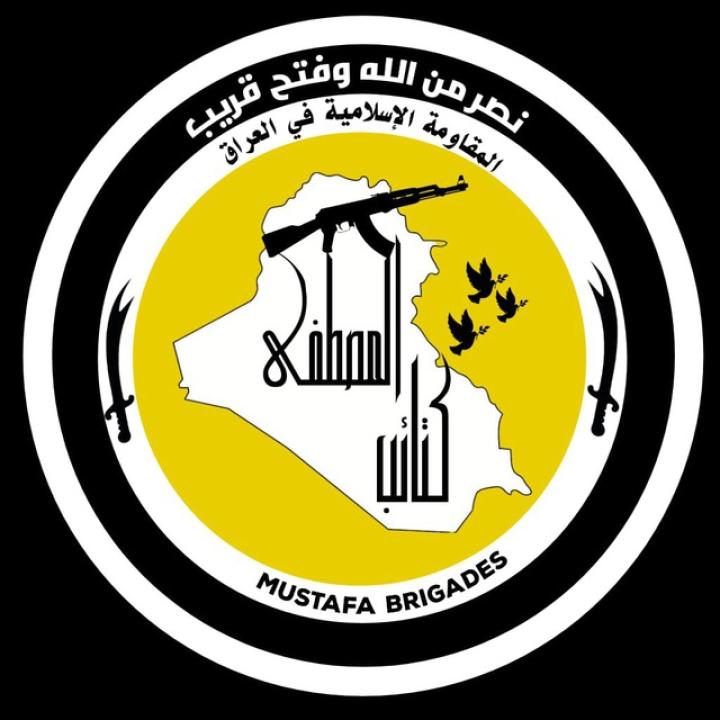
What Basrawi Politican Is Behind Kataib al-Mustafa?

The strange little militia Kataib al-Mustafa announced itself to great fanfare in Basra, and judging by its media reception, it has an important mystery backer.
On September 29, a little-known Iraqi armed group called Kataib al-Mustafa (KM) held a press conference in Basra. Nine masked men entered what seemed to be a mosque, and the speaker read out a poorly written statement declaring the group's readiness to “break the backbone of the Zionists.” He continued: “You sons of Marhab [an epithet for Jews], you will not see peace, because our long-range missiles will reach the Zionists' burrows. The enemy will be surprised with biological capabilities and advanced weaponry such as missiles and drone types HD, RQ, 4U and locally manufactured long-range [missiles] type Muhandis and Qasem" He added, "We affirm that the American evil bases in the region are within the range of our missiles" (Figure 1).
Observations
The posture and equipment of the militants resembled that of Iraqi tribal fighters. Yet unlike similar groups, KM conducted its press conference in a well-lit religious building rather than a dark, unspecified location.
KM convinced at least seven Iraqi media outlets to attend the event, including al-Nujaba satellite television (run by the militia Harakat Hezbollah al-Nujaba), iNEWS (affiliated with Kataib Sayyid al-Shuhada), al-Ghadeer television (run by the Badr Organization), al-Janoub TV (run by Saraya al-Jihad), and al-Rabiaa TV (known to be close with multiple Iran-backed militias). This exposure led to the event being viewed around 850,000 times on al-Rabiaa outlets alone.
Who Is Behind KM?
The name Kataib al-Mustafa first appeared on June 21, 2023, when the group issued another poorly written announcement using highly charged language to threaten U.S. targets (Figure 2). Based on analysis of KM’s Telegram channel, the key figures behind the group are Shubar al-Musawi and Saif al-Maryani al-Musawi, both probably from Basra.
On June 14, 2024, Maryani held a press conference denouncing the Haditha-Aqaba pipeline project, which is intended to channel oil to Iraq's pro-American neighbor Jordan instead of the militias’ preferred destination, Syria. In a social media post related to the press conference, he was described as “one of the heroes of Kataib al-Mustafa in Basra” (Figure 3).
The voice, writing style, and delivery in the September 29 and June 14 pressers are strikingly similar, indicating that Maryani likely read both messages threatening to attack Israel and U.S. bases. Notably, KM did not post the September 29 presser on its own Telegram channel, probably to conceal the link between Maryani and the U.S.-Israel threats.
Maryani managed to attract a substantial number of Iraqi satellite TV channels to the June 14 presser as well. This suggests that while KM may not be a real militia with actual military capabilities, he has mastered the art of media engagement by gaining significant coverage for his group despite its limited status. KM appears to be a propaganda-only effort, but for what purpose and to whose benefit remain unclear. The gathering of so many prominent national media outlets to cover such an underwhelming local event strongly suggests that the group has backing from a major Basra politician.

